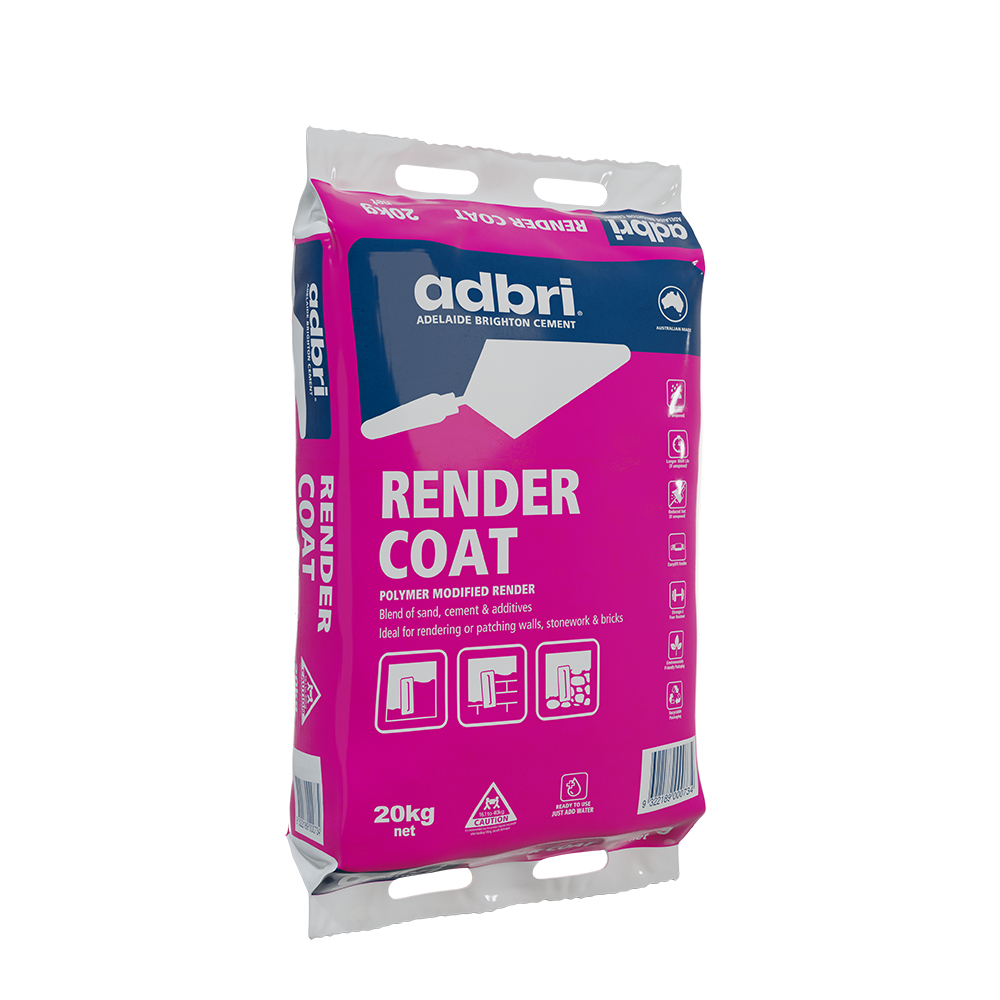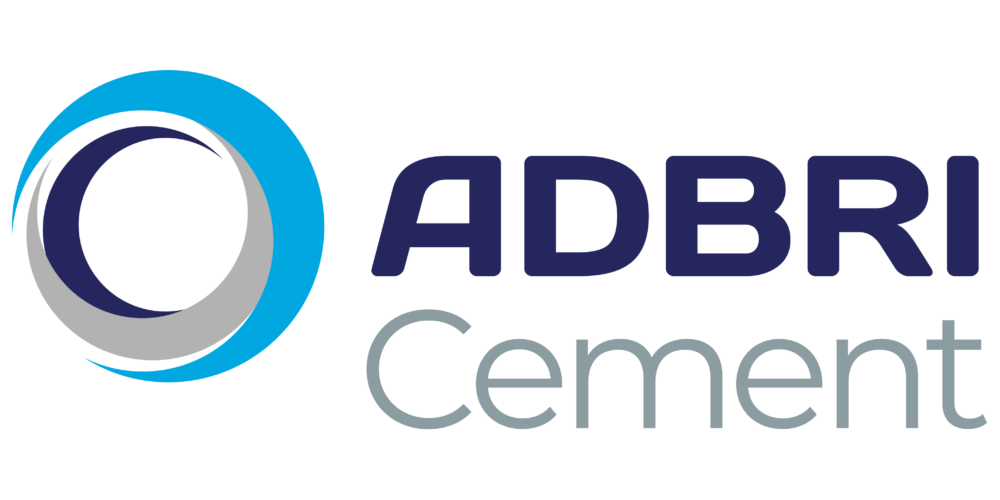Rendering

Materials & Equipment – Essential
| • Adbri Cement Render Coat 20 kg | • Mechanical mixing device (600 rpm drill with mixing paddle) | • Suitable mixing container (20L Bucket) |
| • Steel float | • Clean water |
Materials & Equipment – Optional
| • Wooden battens | • Other floats for finishing |
Safety
When working with Render Coat wear protective clothing, strong boots, gloves, dust mask, and eye protection.
Manual handling of bag products without due care and attention may result in personal injury. Unless you have been trained in manual handling methods it is suggested that you share the load with another person.
For more safety information refer to the Render Coat safety data sheet.
Site Preparation
- Clean the surface you intend to render, removing any dirt, dust, oil, grease or paint.
- Smooth or polished surfaces may require a bonding agent (primer). This should be available from most hardware stores. If you are unsure, seek professional advice.
- Highly absorbent surfaces such as sandstone or porous blocks should be well dampened immediately prior to rendering.
- If required, nail the wooden battens at each end of the wall to act as a thickness guide for your render, and to give you a clear edge to work to.
- Using the following table, calculate how much Render Coat you will need for your project
| Render thickness | Coats required | Coverage per 20 kg bag | Dry material required per m2 |
|---|---|---|---|
| 4 mm | 1 | 2.7 m2 | 7.2 kg |
| 6 mm | 1 | 1.7 m2 | 10.8 kg |
| 8 mm | 1 or 2 | 1.3 m2 | 14.4 kg |
Mixing Render
- Do not mix more render than you can use within one hour.
- Pour three litres of water into a clean container such as a 20 litre bucket, for each 20 kg bag of Render Coat used.
- Using a suitable mixing device, agitate the water while steadily adding the Render Coat powder.
- Once all Render Coat has been added, mix thoroughly until an even consistency and colour is obtained.
- Do not add too much water in the following step as this will cause shrinkage, cracking and low strengths. No more than four litres of water should be used for each 20 kg bag of Render Coat.
- If necessary, add a small quantity of clean water (maximum of one litre) while mixing to achieve the desired consistency.
- Spillage or partially set material should not be re-tempered with water and must be discarded.
- Clean your tools and equipment as soon as possible to prevent further applications from being contaminated with old material.
Applying the Render
- Apply a heaped amount of Render Coat to the steel float.
- Right-handers should begin from the left of the work area, left-handers should begin from the right.
- Starting at the bottom of the work area, move the float upwards along the wall in an arc, scraping the material onto the surface at the desired thickness (wooden battens nailed to the edges of the work area are good for gauging the thickness of the coat).
- Continue applying the Render Coat to your wall using this technique until the area is covered to the required thickness.
- Remove wooden battens if used and apply Render Coat to the edges.
- Once the surface is completely covered, rub the float over the wall in a wide circular motion to ensure an even coverage. If you notice that the float is ‘pulling’ at the surface of the render, it may not be ready to be floated. Wait for 10 minutes and try again.
- If you are applying a second coat, wait at least 24 hours between coats.
Finishing the Render
There are a wide variety of finishes that can be achieved. Rub different types of floats and materials over the surface to achieve the desired finish. Try the following floats and materials:
- Smooth Finish – Float the surface with a steel trowel
- Standard Finish – Use a foam float for a traditional finish
- Bagged Finish – Use a ball of wet hessian
- Brushed Finish – Drag a stiff brush over the surface
- Sponge Finish – Mop the surface with a damp sponge
- Painted Finish – Use an oil or alkali based paint
Render Coat must be protected from the hot weather direct sunlight, drying winds and rain.
The finished Render Coat coating should be left to cure for three days before a textured coating or masonry paint may be applied.
